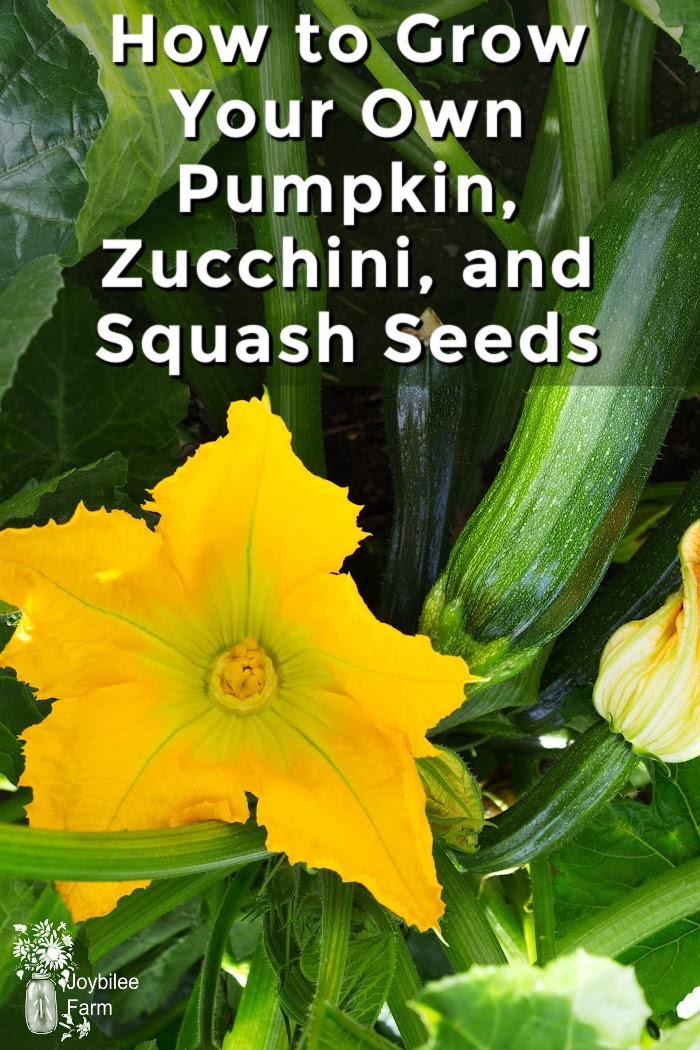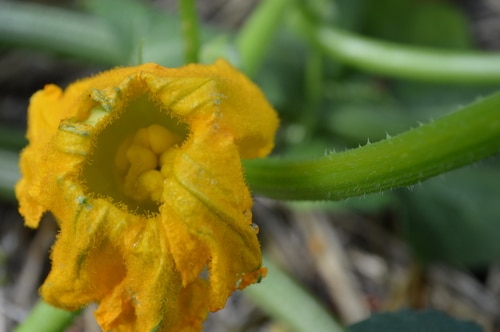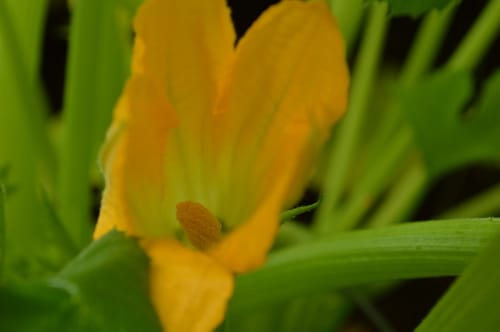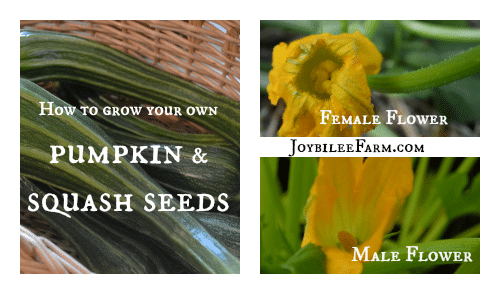How to Grow Your Own Pumpkin, Zucchini, and Squash Seeds
Step-by-step instructions on how to grow squash, pumpkin, and zucchini seeds in your garden. Follow these easy instructions and you’ll never need to buy squash or pumpkin seeds again.

Have you noticed that when you buy a package of zucchini, pumpkin, or squash seeds, there are only a few seeds in the package? Then if you use the package for 3 or 4 years, the seeds stop germinating and you need to buy more seeds. But if you decide to save the seed from your plants you get the craziest fruit — not what you expected at all.
Using seed from your plants can be a crapshoot. It doesn’t need to be that way. You actually can grow and save your pumpkin, squash, and zucchini seeds, and have the seed grow true. Follow these easy instructions to learn how to grow squash seeds and you’ll never need to buy squash or pumpkin seed again.
Zucchini, butternut squash, pumpkins, sweet dumpling, sweet mamma, Hubbard are just a few of the hundreds of squash varieties available to home gardeners. Squash, zucchini, and pumpkin plants have both male and female flowers on the same plant. Female squash flowers need to be pollinated to produce fruit and seeds. And the female flowers need to be pollinated by the same variety of male squash flowers to produce seed that is true to the parent. Not only that but to get strong seeds, you’ll need to pollinate with two different plants of the same variety of squash. It sounds a little daunting but it isn’t.

Three varieties of squash don’t cross-pollinate
There are 3 different kinds of squash. Cucurbita pepo, Cucurbita moschata, and Cucubita maxima. C. pepo includes summer squash, most smaller squashes like a sweet dumpling, crookneck, spaghetti squash, as well as many smaller pumpkin types. C. moschata includes all the butternut type squashes with their orange flesh and easy-to-peel skins. While C. maxima include the giant pumpkin and Hubbard squashes, with their hard skins. Two of these varieties won’t cross-pollinate with each other. So you could just grow one of each kind and you would be sure that the seed that you produced will grow true to the parent. But since squash is pollinated by bees, and bees will forage for pollen and nectar within a mile, you need to keep your squash plants isolated by a mile to fully prevent cross-pollination. If you are the only gardener within a mile of your garden, you are safe from unwanted cross-pollination. But if your neighbour is also growing a vegetable garden you will need to isolate your squash plants to get seed that is true to the parent.
How to isolate your garden
Bees forage within a mile of their hive. However, putting a natural barrier, like a tall hedgerow or woods between your garden and the neighbour’s will inhibit the bees from moving between them. If you isolate your garden using flowering plants, berry shrubs, and native trees in a hedgerow, your squash plants will be partial, though not fully protected from cross-pollination.
How to isolate a single plant for seed production
You can, however, further ensure your success by isolating a few plants in your garden just for seed production. The easiest way to do this is to cover the plants securely with row cover fabric, being sure to tuck in all sides to prevent bees and other pollinators from accessing the plant. You’ll need to pollinate the blossoms by hand using at least two different plants to ensure viable seeds.
With squash, you won’t get any fruit unless the female flowers are pollinated with male flowers. As soon as your dedicated seed squash begins to mature, remove the row cover so that any additional female flowers can be pollinated by the bees. Mark the hand-pollinated fruit with a piece of colourful yarn so you don’t harvest it prematurely. Allow the hand-pollinated squash to mature on the vine until the skin hardens and the fruit changes colour, to ensure a mature, viable seed.
How to isolate a single squash flower for seed production
If you have a small garden and only a couple of squash plants you can isolate a single female flower for seed production and let the bees pollinate the rest of the plants. The female flower is the flower with a baby squash at the base. The male flower has a straight stem at the base with no baby squash.

Female zucchini flower
To isolate the female flower check your squash plants every morning for female blossoms that will open the next day. Using a piece of masking tape, tape the blossom shut, to prevent it from being pollinated by bees. The next morning, when the blossom is ready to be fully open, remove the tape. You can now hand-pollinate this female squash flower.
How to hand pollinate squash

Male zucchini flower
Remove an open male blossom from the plant and peel back the petals to expose the anther.
Very gently rub the anther of the male flower on the stigma of the female flower, being careful not to damage the female flower. Tape the petals closed again or cover the flower with a small piece of row cover about 6 x 6 inches, securing with a piece of twine, tied loosely at the base of the flower. After a couple of days, the female blossom will be beyond pollination and this cover can be removed.
Mark the stem of the hand-pollinated squash with a bright coloured piece of yarn to remind you not to harvest this squash until it is mature. Once a squash plant has set fruit and is growing seed, the plant will slow down its production of female flowers. You’ll want to plant enough squash plants so that you have enough for food and enough for seed production. I usually keep one plant just for seed production and let 2 or 3 other plants produce fruit by bee pollination.

How to grow squash, zucchini, and pumpkin seeds
- Isolate the female flower
- Remove the male flower from the plant and expose anthers
- Rub the anthers of the male flower onto the stigma of the female flower
- Isolate female flower again until the flower is past cross-pollination
- Allow the fruit to mature on the vine
- Harvest the fruit for seed
- Scoop out the seed and air dry — eat the squash
- Package and label seed for next year’s garden

Zucchini Recipes
Now that you have your seed set for next year, check out these zucchini recipes:
Zucchini Bites with Tex Mex Flavor
Chocolate Zucchini Cake Recipe
Grilled Zucchini Marinated in Aioli and Lime Juice
From my friends:
Carrot Zucchini muffins from Montana Homesteader
Preserving Zucchini for the winter from Little Mountain Haven
Dutch Oven Zucchini Bread from Learning and Yearning
Healthy Chocolate Zucchini Bread from Montana Homesteader



Leave a Reply